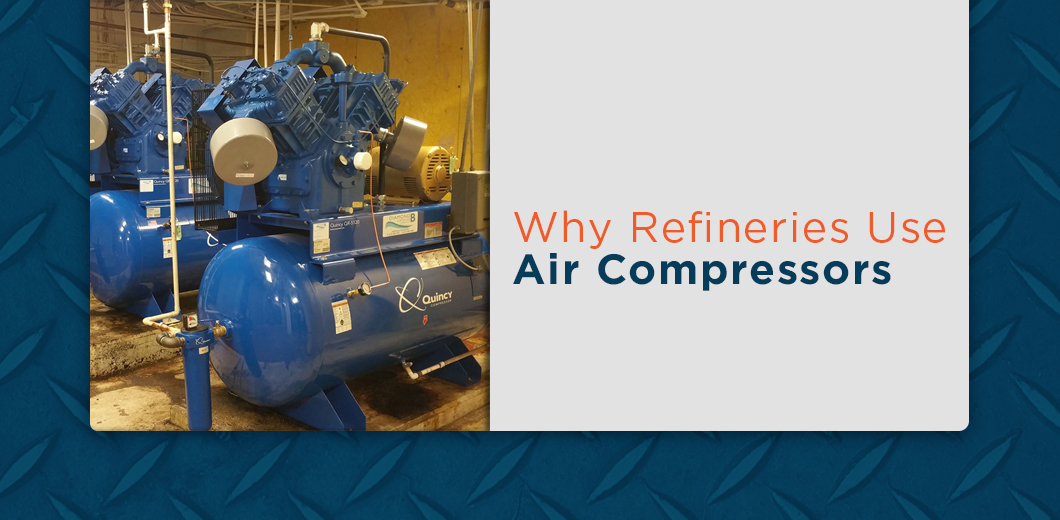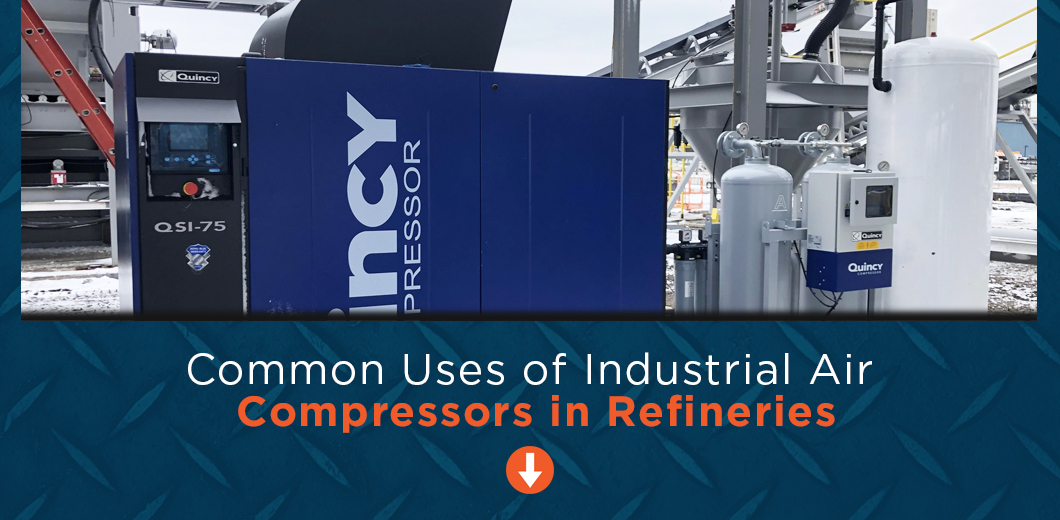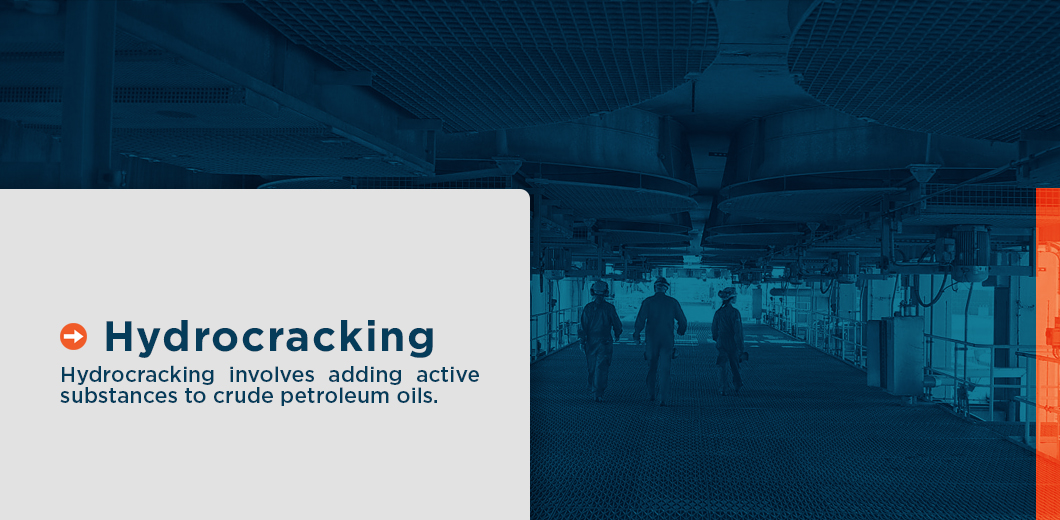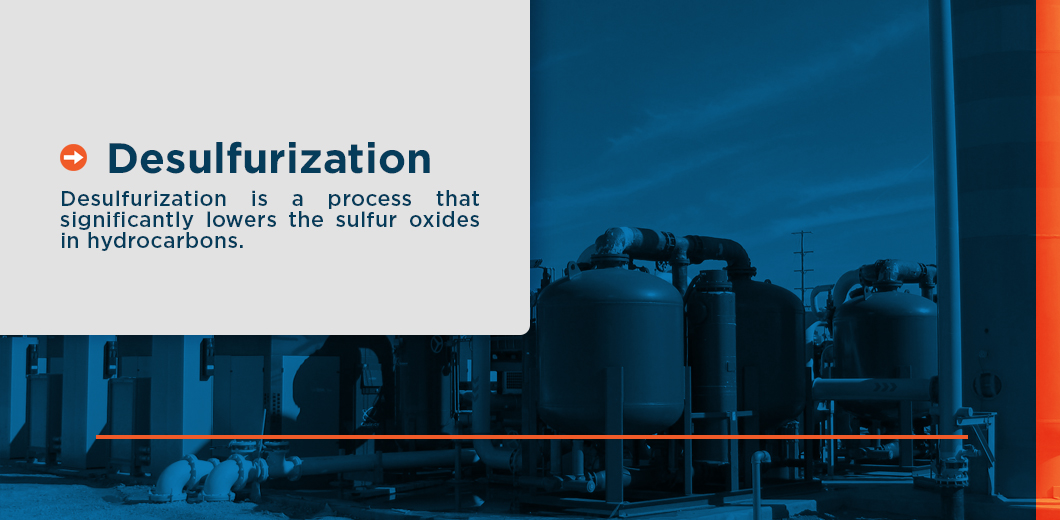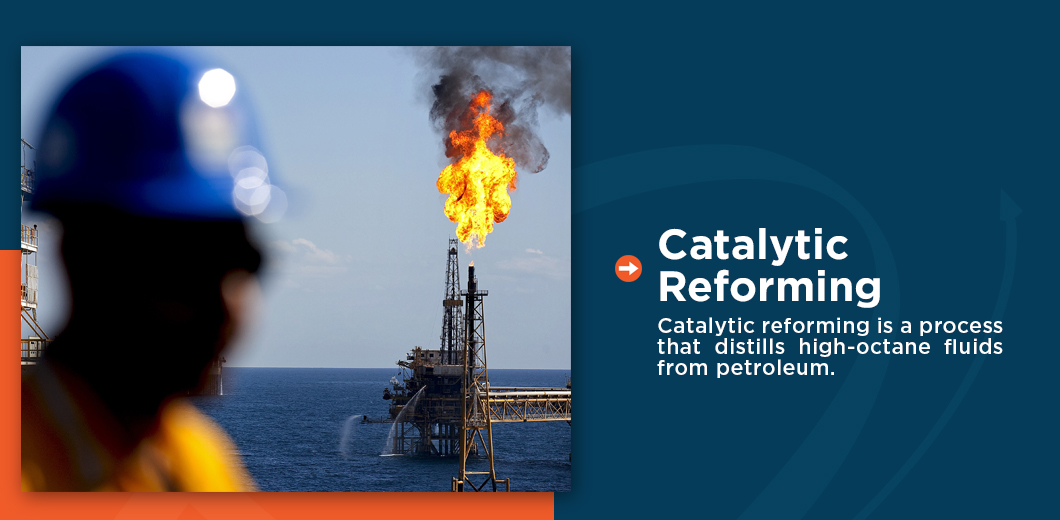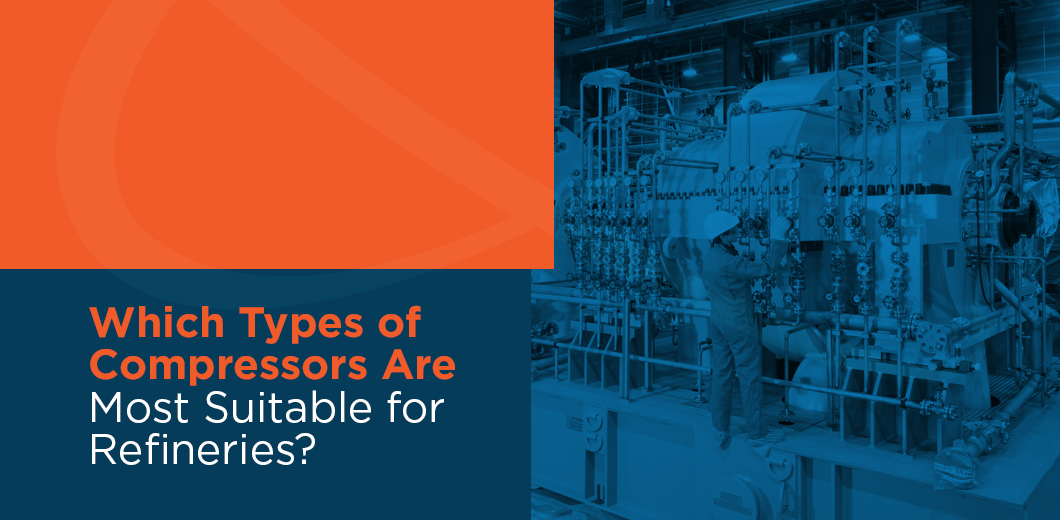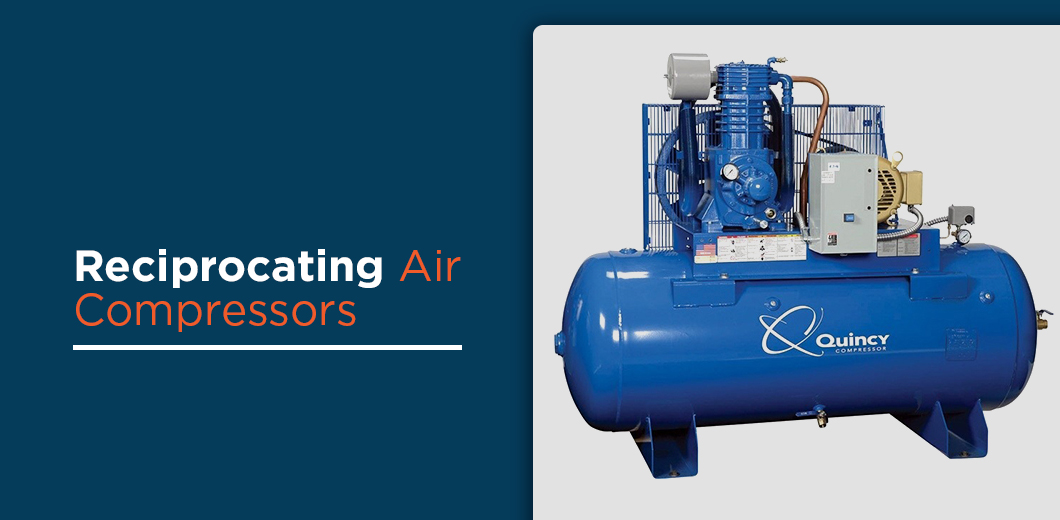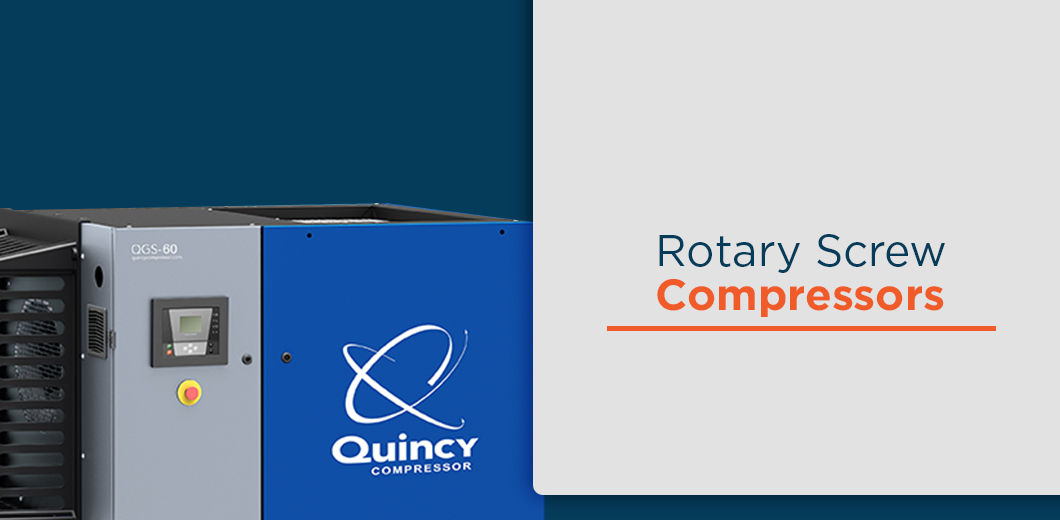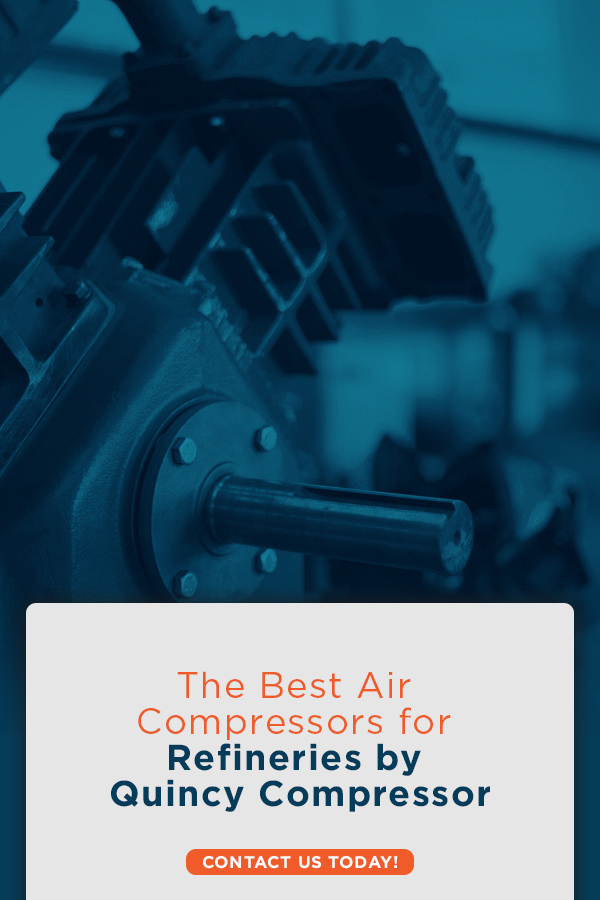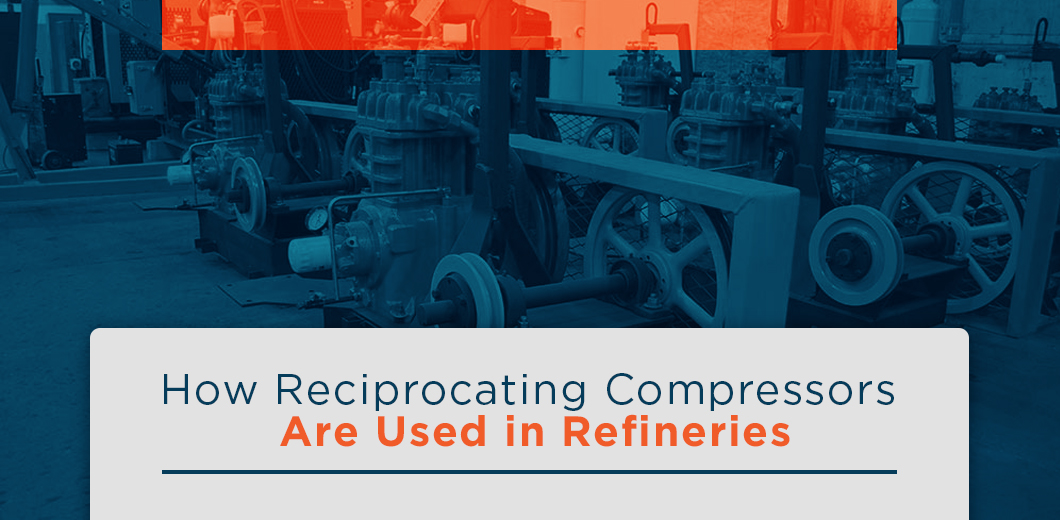 Over the past 200 years, industrialists have found ways to turn raw materials into products. At refineries, employees use these processes to convert natural oils into products that fuel vehicles and add stability to medicines, lotions and foods.
Over the past 200 years, industrialists have found ways to turn raw materials into products. At refineries, employees use these processes to convert natural oils into products that fuel vehicles and add stability to medicines, lotions and foods.
The processes that turn oil from the ground into fuel for a vehicle consist of complex steps that require machinery with optimal air power. The same applies to the processes used to convert plant oils into the bottled goods on supermarket shelves. These processes require the use of air compressors throughout nearly every stage.
At petroleum oil refineries, air compressors power the complex machinery that turns crude oil into everything from gas and diesel oil to petroleum and kerosene. Some of the world’s largest petroleum oil refineries produce as much as 900,000 barrels of oil per day. Every time you fuel your vehicle, the gas that goes into your engine is the result of a high-pressure refining process.
At food oil refineries, air compressors take oils from fruits and vegetables and turn them into the bottled goods people use for cooking. Products such as corn oil, vegetable oil, canola oil, olive oil, peanut oil and coconut oil are among the results of these refining processes.
Refining also takes place at natural gas processing plants, where air compressors purify the contents of raw, natural gas and render it suitable as a power source in residential, commercial and industrial buildings. The same plants also recover various liquids from natural gas, including butane, ethane and propane.
Air compressors also play a role at salt and metal refineries. At the latter, pressurized air processes are critical to the refinement of numerous metals, including copper, gold, silver and magnesium. Knowing how refineries use air compressors can help you better appreciate the role pressurized air plays in human mobility and consumption.
Why Refineries Use Air Compressors
Air compressors have played a crucial role in the refinement of oil for almost as long as oil itself has been a commodity. People accidentally discovered oil mining as a byproduct of mining wells. Centuries ago, when drillers dug deep into the earth in search of clean drinking water, they sometimes found oil. In these pre-industrial times, mankind had little use for oil, since this was before the advent of modern medicine and the invention of automobiles. Encountering oil was a nuisance and often a water spoiler.
During the 1800s, just as mechanical engineering spread, oil came to be recognized for its own range of uses. Before long, entrepreneurs figured out ways to sell oil to consumers and companies. By the turn of the century, people had found a use for oil in medicines and machine products. The game was now on to develop the most effective method for oil drilling.
Early drilling relied on spring poles, but the development of the oil industry made it necessary to drill deeper into the ground. The invention of rotary drilling rigs made this possible.
As the decades passed, rotary drilling techniques became more advanced, culminating with the introduction of compressed air and gas systems. In recent years, air compressors have become more commonplace at oil fields, where the flare of petroleum gas has been a byproduct of the oil-treating process. The introduction of compressors into the refining process has led to improved pipeline flow, among numerous other benefits.
Common Uses of Industrial Air Compressors in Refineries
Refineries use air compressors for a variety of gas-processing operations. With the help of high-pressure air compressors, refining technicians can enhance the quality of crude oil. With the use of mid-pressure compressors, refiners also purify oils and render them suitable for fuel products.
Refiners use air compressors to remove sulfur contents and enhance the quality of gas and oil. The refining accomplished with air compressors renders fuels more efficient in vehicles, ships, machines and aircraft. Some of the essential air-powered processes at refineries include the following:
1. Hydrocracking
Hydrocracking involves adding active substances to crude petroleum oils. It is a catalytic process that reduces the boiling of hydrocarbons and converts the raw oil into different types of fuel, such as gas, kerosene and diesel oil.
As a result of hydrocracking, vehicles can run and lights can shine. Every time you pull into a fuel station along a boulevard or highway exit, the gas you pump into your vehicle has usually gotten refined through the hydrocracking process. In effect, hydrocracking is one of the driving forces of the global economy.
Hydrocracking is also largely responsible for the production of kerosene, which fuels everything from jet engines to heaters and lamps. The jets that you see in the sky can soar thanks to the hydrocracking process. Many homes rely on kerosene for heat and light, and many of the city lights that outline a nighttime skyline come to life from the product.
Hydrocracking is a high-pressure process that requires more than 1,500 psig. As such, the use of reciprocating compressors facilitates the process best.
2. Hydrotreating
Hydrotreating is a process that removes oxygen, chlorine and sulfur from hydrogen. Hydrotreating can also refer to the reaction organic compounds undergo when this process occurs.
There are various categories of hydrotreating processes. Removing contaminants requires use of a method called catalytic hydrotreating. For the removal of sulfur contents, hydrodesulfurization is vital. The goal of all such processes is to purify fuels. The high-quality fuels that power machinery will usually have undergone the hydrotreating process.
Catalytic hydrotreating removes up to 90 percent of contaminants from petroleum products. These contaminants may include metal, sulfur, oxygen and nitrogen. Hydrotreating enables fuel refiners to upgrade heavy crude oil into high-grade fuel products. The fuels used in large commercial vehicles and high-tech factory machinery have usually been put through this process.
Hydrotreating is a mid-pressure hydrogen process usually carried out with the help of oil-injected screw compressors. Refiners often prefer this type of compressor because of the low amount of maintenance required to keep such machines moving continuously through hours of nonstop hydrotreating cycles.
3. Desulfurization
Desulfurization is a process that significantly lowers the sulfur oxides in hydrocarbons. Desulfurization helps prevent acid rain, which is one of the more dangerous effects of high amounts of sulfur in hydrocarbons. The process involves the use of hydrogen gas.
The desulfurization process makes fuels more eco-friendly by reducing the amount of sulfurs that a machine or vehicle might emit while in operation. At refineries that run various forms of high-powered equipment, the desulfurization process helps make such environments cleaner and safer for workers.
As with hydrotreating, desulfurization is a mid-pressure process that only requires up to 1,500 psig. As such, the best equipment to perform this process is oil-injected screw compressors, which adapt to various work environments and require minimal maintenance throughout lengthy work cycles.
4. Flue-Gas Desulfurization
Flue-gas desulfurization is a process in which power plants remove sulfur dioxide from exhaust gases. The method also takes place at trash incineration sites and for other operations that emit sulfur oxide. Flue-gas desulfurization is good for the environment because the process helps reduce emissions at factories and trash sites.
Without flue-gas desulfurization, heavy streams of noxious gases could billow out from incineration sites and power plants. Such gases could have a harmful effect on the environment by creating pollution clouds over urban and rural areas. In effect, flue-gas desulfurization helps conserve natural habitats and the world’s ecosystem.
5. Hydrodesulfurization
Hydrodesulfurization is a process that extracts sulfur contents from gas and petroleum. Commercial fuels like kerosene, gasoline, petrol and diesel fuel undergo this process. It reduces the level of emissions from the vehicles, ships, trains and aircraft that use these fuel products.
The removal of sulfur also helps prevents the degeneration of metals that come into contact with fuels inside of engines. Hydrodesulfurization is a mid-pressure process often achieved with reciprocating compressors.
6. Catalytic Reforming
Catalytic reforming is a process that distills high-octane fluids from petroleum. The process involves the dehydrogenation of low-octane hydrocarbons. A side effect of this process is the production of hydrogen gas, which ultimately comes into play in other techniques at refineries, including hydrocracking.
The process of continuous catalytic reforming (CCR) is a mid-pressure operation usually conducted with oil-injected screw compressors. As with hydrotreating and desulfurization, catalytic reforming requires approximately 1,500 psig.
As the source of hydrogen gas, the process of catalytic reforming is essential for the production of agricultural products and plastics. In agriculture, the hydrogen gas generated through CCR is in fertilizers that help harvest crops across the world’s green lands. The side effects of catalytic reforming also benefit the manufacturing industry because hydrogen gas is essential in the production of plastics, which are in everything from toys and fixtures to medicine containers and electronics enclosures.
7. Fluid Catalytic Cracking
Fluid catalytic cracking is a process to convert the boiling hydrocarbons of crude oil into fuel products. The process has replaced thermal cracking, which served a similar function but was incapable of producing gas amounts of the same volume or octane level as fluid catalytic cracking.
As one of the driving forces behind modern-day transportation, the process of fluid catalytic cracking is vital to the world’s economy. The process yields most of the fuel products that power automobiles, trains, commercial vehicles and machinery. Across America’s highway grid, the movement you see today is the primary result of fluid catalytic cracking.
Fluid catalytic cracking is a high-pressure process that generally necessitates the use of reciprocating compressors. The process turns unrefined oils into fuels that allow vehicles to operate at higher speeds for longer periods. Overall, vehicles are more efficient on the fuels this process generates.
8. Delayed Coking
Delayed coking is a process that cracks the hydrocarbon molecules of oil into coker gas and petroleum. The process requires multiple passes at high temperatures.
Like most heavy gases, the production of coker gas requires the use of oil-free, positive-displacement compressors. The lack of lubrication in the chamber of these compressors eliminates the possibility of oil or gas contamination during the whole process. In addition to coker gas, screw compressors of the oil-free variety also produce flare gas and FCC wet gas.
9. Steam Reforming
Steam reforming is a process that synthesizes natural gas and other fuels to make chemicals like carbon monoxide and syngas. It relies on the use of heat and high pressure in a reformer device.
The process of steam reforming plays a critical role in agriculture because it produces syngas, which serves as an intermediate in the production of fertilizer. As the process occurs, water and methane interact and produce hydrogen and carbon monoxide. The process involved can convert any product that contains carbon into lengthier hydrocarbon chains.
In the refining processes that take place at industrial plants, oil-injected screw compressors reform steam methane. During this process, the oil functions as a sealant, which prevents the leaking of gas.
10. Pressure Swing Adsorption
Pressure swing adsorption is a process that removes select gases from gas mixtures. The process works by identifying the molecular character of specific gases and using adsorbent materials, such as activated carbon and zeolites, to isolate the selected gases at high pressure.
At industrial facilities, oil-injected screw compressors generally conduct the process of pressure swing adsorption. As with steam reforming, swing adsorption requires the presence of lubricant to act as a sealant during the compression process. Without this seal, gas would escape, and the process would become less efficient, costlier and more time-consuming.
11. Flare Gas Recovery
Flare gas recovery is a process that saves gases from waste for other uses. This process prevents these gases from flaring and spreading harmful emissions. The process involves the isolation of headers, the removal of liquids and the compression of gases.
The process of flare gas recovery plays a vital role in environmental cleanup, as it lowers the amount of greenhouse gases refinery plants ultimately release from machines and chemicals. Without this process, factories would be less eco-friendly.
The purpose of flare gas recovery is to render the gas as clean and pure as possible. Therefore, the process relies on oil-free screw compressors. With no lubricant involved in the process, there is no oil to disperse into the gas.
12. Hydrogen Production
Hydrogen production is a blanket term for all the processes that produce hydrogen in industrial settings. Some of the most common methods of hydrogen production include electrolysis, thermolysis and steam reforming.
Compressed hydrogen fuels hydrogen vehicles. The process requires high-pressure equipment with optimal pound-force per square inch to send hydrogen gas into tanks through pipelines. Reciprocating compressors usually help carry out hydrogen production techniques.
Which Types of Compressors Are Most Suitable for Refineries?
At refineries, the processes involved require high-powered and medium-powered air compressors. Most of the processes are ongoing and therefore necessitate compressors that can deliver high horsepower and optimal psig for continuous cycles. The best air compressors for refineries are as follows:
1. Reciprocating Air Compressors
Reciprocating compressors are among the most common air pressurization machines factories throughout the industrial sector, including the oil and gas industry. A reciprocating compressor draws ambient air into the machine with a crankshaft. The air then gets pressurized in a cylinder with a piston and released for its ultimate destination.
Reciprocating compressors come in single- and two-stage models. In a single-stage reciprocating compressor, each incoming air supply gets pressurized once and then sent for its end purpose in machines and pneumatic tools. In a two-stage reciprocating air compressor, each supply of pressurized air travels into a second cylinder where a smaller piston further reduces the air volume, this time at an even higher pressure.
2. Centrifugal Compressors
Centrifugal compressors are common at oil and gas refineries, where the machines deliver constant pressure for continuous operations. Relying on an ongoing fluid flow, centrifugal compressors make it possible for oil to travel through pipelines. Compressors of this type deliver high horsepower, which makes them ideal for some of the most demanding, high-pressure operations. Centrifugal compressors deliver optimal psi and come in single- and two-stage models.
3. Gas Compressors
For various processes, refineries use a compressor type unique to the functions and needs of the oil and gas industry: the gas compressor. Whereas an air compressor pressurizes air by reducing its volume, gas compressors do the same with gases. Inside a gas compressor, incoming gas supplies get pressurized in a compression chamber and released for various uses. Gas compressors are common for hydrocracking, hydrotreating, diesel and gas desulfurization, catalytic reforming and other processes.
4. Rotary Screw Compressors
For processes like hydrotreating, catalytic and steam reforming, rotary screw compressors provide the necessary air power. In a rotary compressor, air gets pressurized along the threads of a screw within an airtight chamber. The air then goes on to power various industrial processes, which could include any number of medium-powered machines at an oil or gas refinery.
The Best Air Compressors for Refineries by Quincy Compressor
Knowing how air compressors are used in refineries, the technology is rapidly spreading throughout the developing world as industrialization progressively benefits emerging economies like India, China, Brazil and South Africa. In these and other markets, refiners and manufacturers are hoping to mimic and possibly exceed the efficiency and production volumes of G7 competitors.
For many of the world’s upcoming refiners and manufacturers, the model for success comes from the U.S., where compressed air has long been one of the driving forces behind the industrial sector. Whenever you drive a vehicle or use public transportation, your mobility is possible thanks to products refined at oil and gas factories. Each time you buy medicine, cleaning products and packaged foods, compressed-air-reliant manufacturers and the refined oil they produce make the stability or flavor possible.
For most of the past century, Quincy Compressor has been the leading developer of air compressors and pneumatic tools for industrial applications. At oil and gas refineries, our compressors are in use for a vast range of processes that turn raw oil into the fuels used in automobiles, ships and aircraft. Much of the movement you see along highways and tracks is thanks to Quincy-brand compressors.
As the world becomes more and more urbanized and fast-paced, an increasing number of refiners and manufacturers are emerging to claim shares of the various markets sprouting through these developments. To be competitive, it is crucial to have an industrialized arsenal complete with high-powered air compressors. Check out Quincy Compressor’s industrial air compressor selection to learn more about how our machines can transform your refining processes.


